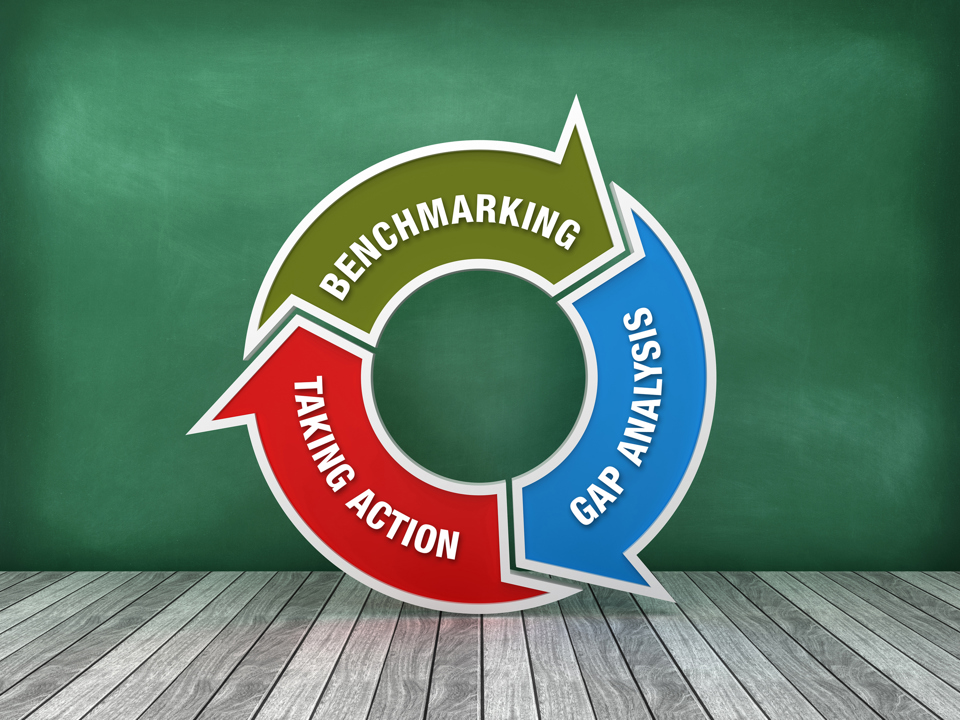Managing road risk – which is at the heart of a new Department for Transport (DfT)-backed benchmarking programme for fleets, in partnership with Fleet News, Driving for Better Business and Roadsafe – has never been a subject to quicken the pulse. Often it struggles for space on the boardroom agenda.
Attracting dedicated professionals and fleet managers to road safety conferences, seminars or discussion groups is one thing. But getting the message across to a wider audience and out to drivers can be a challenge. Often it feels as though you’re going round and round in circles.
The new DfT project, which formally launches this month, will help managers to overcome this hurdle by allowing organisations to measure and contrast their achievements against others. This will give them the ammunition to dramatically improve their own performance.
Central to the programme will be a new fleet benchmarking calculator which will sit as part of a trio of online tools available on the Driving for Better Business (DfBB) website to help firms improve their business performance.
Among the first organisations invited to use the benchmarking tool will be those registered as part of the DfBB community which comprises more than 100 employers, collectively managing in excess of 1.1 million drivers, and members of the Fleet News Fleet200 membership programme.
They will be joined by customers from FleetCheck, Webfleet and Geotab, who have also been closely involved in the project.
The DfBB suite of tools facilitates a circular process of improvement. Benchmarking sits as the primary entry point to this process and asks the critical first question: Do I need to improve?
Supported by Fleet News, Driving for Better Business (DfBB) and Roadsafe, benchmarking will help UK businesses to manage risk and improve safety. David Williams reports on behalf of Roadsafe, a partner of DfBB
Managing road risk – which is at the heart of a new Department for Transport (DfT)-backed benchmarking programme for fleets, in partnership with Fleet News, Driving for Better Business and Roadsafe – has never been a subject to quicken the pulse. Often it struggles for space on the boardroom agenda.
Attracting dedicated professionals and fleet managers to road safety conferences, seminars or discussion groups is one thing. But getting the message across to a wider audience and out to drivers can be a challenge. Often it feels as though you’re going round and round in circles.
The new DfT project, which formally launches this month, will help managers to overcome this hurdle by allowing organisations to measure and contrast their achievements against others. This will give them the ammunition to dramatically improve their own performance.
Central to the programme will be a new fleet benchmarking calculator which will sit as part of a trio of online tools available on the Driving for Better Business (DfBB) website to help firms improve their business performance.
Among the first organisations invited to use the benchmarking tool will be those registered as part of the DfBB community which comprises more than 100 employers, collectively managing in excess of 1.1 million drivers, and members of the Fleet News Fleet200 membership programme.
They will be joined by customers from FleetCheck, Webfleet and Geotab, who have also been closely involved in the project.
The DfBB suite of tools facilitates a circular process of improvement. Benchmarking sits as the primary entry point to this process and asks the critical first question: Do I need to improve?
By allowing organisations to see how they fare when key metrics are set against the performance of their peers, it becomes clear how they measure against both a user average benchmark and a good practice benchmark.
Step two is to ask: If I need to improve, where do I start? Going through a detailed Gap Analysis highlights the areas that could deliver the required improvements to raise the organisation’s benchmarking scores.
Once the gaps have been identified, the third question is: How do I take action?
For this, DfBB has invested in some major improvements to its resources section to provide targeted help for each question in the online Gap Analysis.
Having implemented the improvements and given them time to bed in, it’s time to return to the start of the circle and ask the final question: How big was the improvement? Thus, the process starts again.
“In my opinion, there is no such thing as a perfectly run fleet,” says Simon Turner, DfBB campaign manager. “I don’t know a single fleet manager who would make such a claim – even the ones who manage risk to a very high standard. It’s a constantly evolving project for most, and, as a fleet grows and improves, new and different challenges may well start to appear.
“Successful fleet risk management is about constantly measuring, analysing, tweaking and monitoring – which is what we’ve designed this new system to help with"
Simon Turner, DfBB campaign manager
“It starts with the benchmarking tool to help fleet operators compare their performance to others. One of the challenges for benchmarking has always been the fact that businesses define, measure and report different metrics in different ways. We’ve pulled together a group of fleet experts to design a set of metrics that most organisations would be able to work with – information they should readily have to hand. Our benchmarking tool then converts that information into ratios that are easily comparable with other fleets.”

Do I need to improve?
The figures fleets are able to benchmark are comprehensive. From the data entered, the system will calculate:
*Incidents per million miles
*Average cost per incident
*Average incident cost per vehicle
*Average maintenance cost per mile
*Average maintenance cost per vehicle
*Average fuel cost per mile
These metrics will differentiate efficient, well-run fleets from those that are being managed less effectively.
A key feature of the benchmarking tool is the segmentation of the data by vehicle type, which enables a far more accurate comparison, including powered two-wheelers, cars, vans/light commercial vehicles, heavy goods vehicles and passenger-carrying vehicles.
But how do you know if you are doing well or not?
“We really wanted to show two benchmarks in this system,” says Turner. “The first is being able to compare your performance to the all-user average in the system. This gives organisations a clear indication of where they sit as part of the whole picture – are they above or below average?
“But that, in itself, is only part of the picture and doesn’t help them determine if where they are is good enough.
“The second benchmark is to compare themselves against good practice. For that we have recruited a broad range of fleets, of different sizes and from different sectors, who we know manage their work-related road risk to a high standard. Their combined average sets the benchmark for good practice.
“As we move forward, we will continue to monitor and update the good practice benchmark, and would like to see that improve over time, but what we’re really interested in is how we can help raise the all-user average at a faster rate, so it moves close to good practice.”
I need to improve. Where do I start?
Having determined where your fleet sits when compared with others, it’s time to identify where to start looking for improvement. The DfBB Gap Analysis identifies all the things that well-run fleets look at – and not just legally required, but the good practice management systems that deliver the higher levels of performance.
How do I take action?
Driving for Better Business has relaunched the resources section of its website to provide a much greater range of tools, guides, advice and examples of good practice, and to make them more easily accessible.
In the final report, each of the questions in the Gap Analysis is now able to pre-filter these resources to help risk managers get to the most useful resources quickly and start to fill in the gaps and improvement the way their management systems.
As well as information to help managers, a new section of resources has been introduced that is dedicated to driver knowledge, including PDFs, weblinks and videos which can be shared with employees to raise awareness of important issues.
“We are conscious that we continuously encourage managers to engage their drivers on all these safety-related issues, but not everyone has the expertise to do this, and those that do have the knowledge often don’t have the time or internal resource to produce what is needed,” says Turner.
“What we’ve created in each section of resources is a button to filter the ones that are suitable for drivers so you can instantly find downloads or videos to share with them on topics from fatigue and driver distraction to vehicle roadworthiness and van loading limits.”
Back to benchmarking
With gaps identified and improvement now underway, it won’t be long before the fleet is back at the benchmarking tool to see how effective their work has been and how much closer they are to the good practice benchmark – at which point the whole process begins again in a quest for further improvement.
To facilitate this continuous journey, the system offers the opportunity to save up to five consecutive years’ worth of results so that, as well as comparing current year results against other fleets, managers can track their own trends over time.
So, while you’ll still be going round in circles, at least they’ll be productive ones, and the expectation is that you will find that you and your fleet are performing a little bit better each time around.
To start your benchmarking journey, go to www.drivingforbetterbusiness.com/benchmarking
Login to continue reading.
This article is premium content. To view, please register for free or sign in to read it.


















Login to comment
Comments
No comments have been made yet.